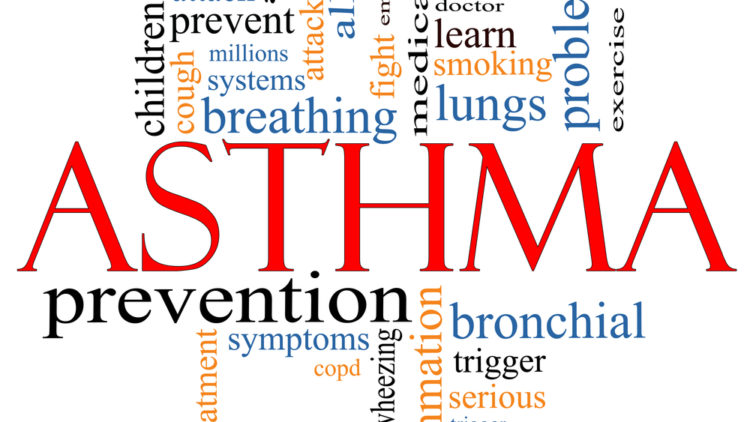“When you can’t breathe, nothing else matters.”
The American Lung Association
26 million Americans live with asthma, a chronic disease with chest tightness, shortness of breath, and wheezing. It is one of the leading causes of school and work absence. Allergies also can be very disruptive; resultant congestion, itching, sneezing and sinus disease contribute to poor performance, low productivity and overall decreased quality of life. With asthma, constriction and inflammation of the bronchial tubes are present, making it difficult to breathe. These two conditions are often seen together because allergies are a common cause of asthma. An allergist is a physician who can determine whether asthma is present, and if so, whether allergies are involved. Pollen, mold, dust mites, animals, cockroaches all can act as “allergens”, triggering allergies that can easily lead to life-threatening asthma.
Allergists often act as detectives, analyzing clues.
Seasonal allergy and asthma can be triggered by the seasonal variation of tree,
grass or weed pollen. Important perennial allergens include mold, dust mites,
and beloved household pets. Sometimes symptoms are brought on by non-allergic
irritants, such as environmental tobacco smoke, vehicle exhaust fumes,
perfumes, candles or changes in temperature. For example, exercise-induced
asthma can be triggered by physical activity from rapidly inhaling dry, cooler
air.
Both asthma and allergies can be managed by careful
interpretation of individualized allergy tests and applying the results to the
specific home and work environment. Identifying and reducing allergen exposure
is a good first step. Prudent use of the right combination of medication
controls inflammation and usually improves the quality of life. However, in the
cases of stubborn symptoms due to obligatory exposure to allergens, patients
are looking for a more durable or permanent solution. (such as dogs and cats)
Allergy immunotherapy (allergy shots) can provide dramatic, long term relief,
often without medication, by eliminating the underlying allergies that cause
the problem. Immunotherapy enables those working outdoors on tolerating pollen,
K-9 officers to handle their dogs, and families to live with their pets.
How do allergy injections work?
Allergies are caused
by an overreactive immune system. Harmless particles trigger an overly
aggressive response by white blood cells just under the skin and mucous
membranes. Injections bypass these cells and deliver harmless allergens to more
complex immune cells which regulate and turn off this destructive allergic
response. Immunotherapy injections are very precise, safe, and only affect the
specific immune response to the ingredients contained in the serum.
Evidence-based clinical literature has shown that nuances of dose, frequency,
and formulation can make the difference between effective and ineffective
allergy treatment. Dr. Duane Gels, a board-certified allergist and director at
Annapolis Allergy & Asthma, has successfully treated thousands of allergic
patients with customized, effective allergy immunotherapy over 25 years. The knowledge and experience of his team to
appropriately use this technique adjust the immune system and provide long-lasting
results. Come be evaluated by the knowledgeable and experienced team at
Annapolis Allergy and Asthma and experience relief!
Allergy Tips
A quality, low-allergen lifestyle can be achieved by
following your allergist’s action plan.
Asthma and Allergies can be triggered by poor indoor air
quality, so change your A/C filters frequently.
Have your heating/AC ducts cleaned frequently as, over time,
dust and other allergens accumulate within the system.
Be aware of environmental weather extremes, as outdoor
exercise can trigger asthma and other respiratory conditions
Identify your specific allergies, and minimize exposure in
your home. Dust, mold/mildew, animal dander all may contribute.
Use of daily nasal saline rinse, such as a NetiPot can be beneficial
to flush out allergens.
Over the counter antihistamines, decongestants and nasal
corticosteroids to control nasal congestion and discharge.
Beware of addictive nasal decongestant sprays; after several
days of use, rebound congestion often develops.
Learn your specific allergens: if pollen allergic, stay
indoors on dry, windy, high pollen days. Close your windows when the pollen
count is high. Remove and wash your
clothes; wash hair before bed, as static can attract pollen.
In conclusion, there are medical diagnostic and treatment options for asthma and allergies. With patient commitment and confidence with their professional medical doctor, one can resume and enjoy daily activities. Come visit the specialists at Annapolis Allergy & Asthma to determine what allergies you may have. We will help you develop a management plan that works for you. Call us today at 410-573-1600.
Copyright Duane Gels 2019









